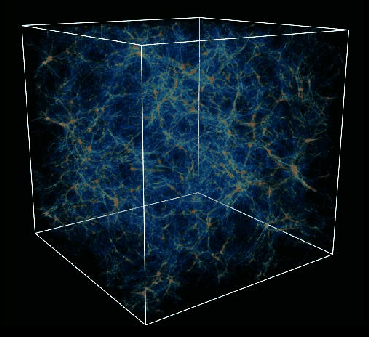Astronomy Picture of the Day
Discover the cosmos! Each day we feature a different image or photograph of our fascinating universe, along with a brief explanation written by a professional astronomer.
November 8, 1995

Simulating the Universe
Credit: G. L. Bryan, M. L. Norman,
UIUC,
NCSA,
GC3


